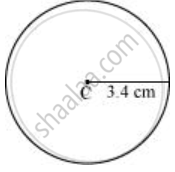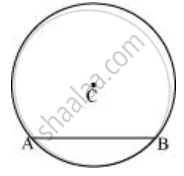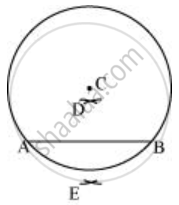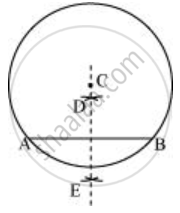Advertisements
Advertisements
Question
Draw a circle with centre C and radius 3.4 cm. Draw any chord `overline"AB"`. Construct the perpendicular bisector of `overline"AB"` and examine if it passes through C.
Solution
-
Mark any point C on the sheet.
-
By adjusting the compasses up to 3.4 cm and by putting the pointer of the compasses at point C, turn the compasses slowly to draw the circle. It is the required circle of 3.4 cm radius.

- Now, mark any chord `overline"AB"` in the circle.

- Taking A and B as centres, draw arcs on both sides of `overline"AB"`. Let these intersect each other at D and E.

-
Join DE, which is the perpendicular bisector of AB.

When `overline"DE"` is extended, it will pass through point C.
APPEARS IN
RELATED QUESTIONS
Draw a line segment of given length and construct a perpendicular bisector to line segment using scale and compass
8 cm
Draw a line segment of given length and construct a perpendicular bisector to line segment using scale and compass
58 mm
The line of symmetry of a line segment is the ______ bisector of the line segment.
Infinitely many perpendiculars can be drawn to a given ray.
Infinitely many perpendicular bisectors can be drawn to a given ray.
Copy figure on your notebook and draw a perpendicular to l through P, using (i) set squares (ii) protractor (iii) ruler and compass. How many such perpendiculars are you able to draw?
Bisect ∠XYZ of figure.
Draw `overline"AB"` of length 7.3 cm and find its axis of symmetry.
Draw the perpendicular bisector of `overline"XY"` whose length is 10.3 cm.
- Take any point P on the bisector drawn. Examine whether PX = PY
-
If M is the midpoint of `overline"XY"`, what can you say about the lengths MX and XY?
Repeat Question 6, if `overline"AB"` happens to be a diameter.
